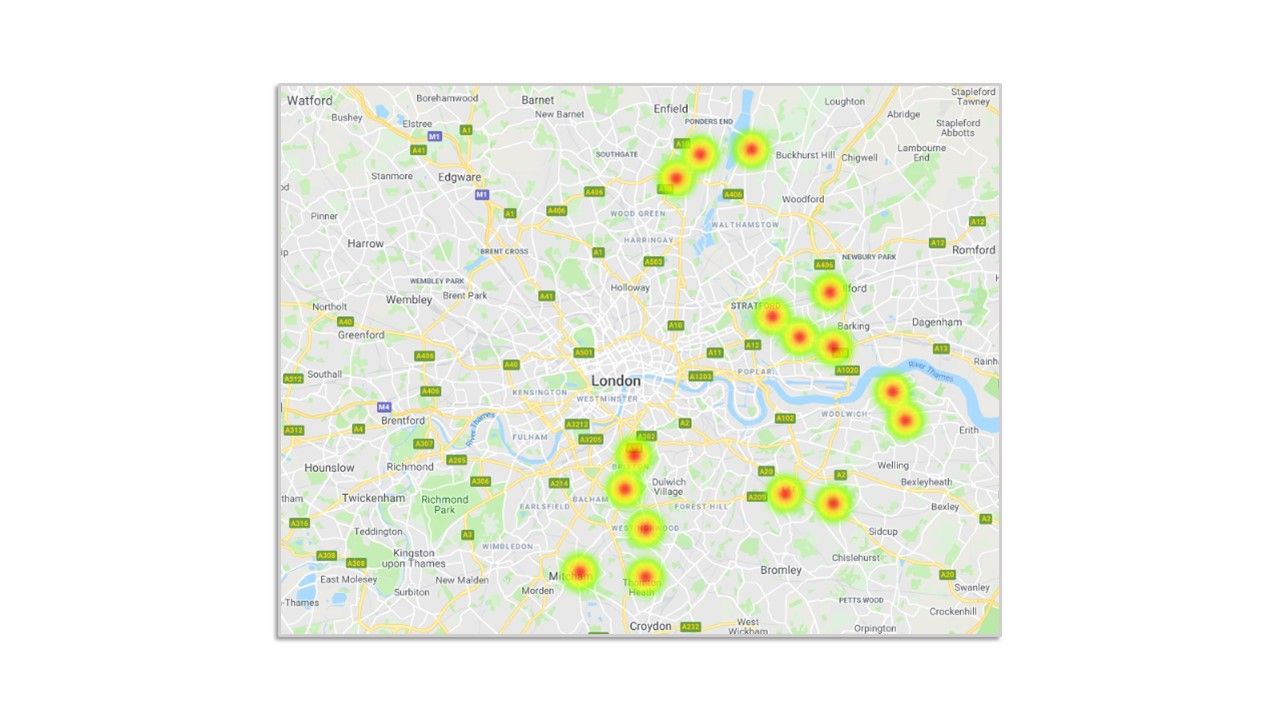London's Top 10 Rental Yields in 2019
For an up-to-date guide to London's top rental yields, you can read the 2021 rankings here.
In recent years, the London property market has proven extremely attractive to both domestic and international investors. While property can create returns through value appreciation, Buy-to-Let investments generate stable value through their rental yields. Due to London’s popularity with investors, properties have benefited from sustained growth in rental value. However, competition for stock has made opportunities increasingly scarce in the most desirable neighbourhoods.
In this post, we will look at which postcodes offer the best London rental yields in 2019 to help prospective investors gain a foothold in the Buy-to-Let market. In order to reach our conclusions, we merged 450,000 data points from Zoopla, Rightmove, and London Datastore pricing averages from 2018/2019 with our own proprietary research.
Based on the above, here are the top 10 areas with the highest rental yield in London:
- Manor Park (E12) - 5.7%
- Lower Edmonton (N9) - 5.47%
- Upper Edmonton (N18) - 5.46%
- Thamesmead (SE28) - 5.20%
- East Ham (E6) - 5.01%
- Plaistow (E13) - 4.84%
- Thornton Heath (CR7) - 4.75%
- Mitcham (CR4) - 4.62%
- Brixton (SW9) - 4.40%
- Lee (SE12) - 4.40%
This is where these areas are located in Greater London:

While these raw values can help guide investors towards the areas of greatest opportunity, there are other variables that need to be taken into account (which we will outline and analyse in future articles):
- Gross-to-Net value: This is the difference between Gross Rental Income and Net Rental Income once marketing and maintenance expenses are deducted, utilisation (void periods) are measured, and capital expenditures are taken into consideration.
- Developing neighbourhoods across the city that have the potential to lead the market in prospective yield in the years to come.
- Recent trends that led to variations in yield, and whether they are likely to have a sustained impact moving forward.
Your prospective returns from a Buy-to-Let asset also depend on the level of supply and demand for properties meeting specific criteria in each area. For example, the demand for multiple-bedroom properties may be high in areas popular with student sharers (such as Kingston) but low in inner-city areas populated by young working professionals (such as Canary Wharf). Based on this, here are the top 10 areas by rental yield when number of bedrooms is factored in to the calculation.
1-Bedroom Properties
- Caterham (CR3) - 6.43%
- Lower Edmonton (N9) - 6.24%
- Harrow (HA9) - 5.56%
- New Cross (SE14) - 5.35%
- Manor Park (E12) - 5.33%
- East Finchley (N2) - 5.30%
- Upper Edmonton (N18) - 5.27%
- Palmers Green (N13) - 5.20%
- Surbiton (KT5) - 5.03%
- Esher, Claygate (KT10) - 5.00%
2-Bedroom Properties
- Upper Edmonton (N18) - 5.79%
- Thamesmead (SE28) - 5.70%
- Lower Edmonton (N9) - 5.35%
- Mitcham (CR4) - 5.30%
- East Ham (E6) - 5.26%
- Manor Park (E12) - 5.25%
- Plaistow (E13) - 5.23%
- Thornton Heath (CR7) - 5.15%
- Addlestone (KT15) - 5.12%
- Dulwich (SE21) - 5.06%
3-Bedroom Properties
- Brixton (SW9) - 6.42%
- Manor Park (E12) - 5.97%
- Forest Hill (SE23) - 5.40%
- Thamesmead (SE28) - 5.31%
- Bow (E3) - 5.24%
- Streatham Hill (SW2) -5.14%
- Lower Edmonton (N9) - 4.95%
- Upper Edmonton (N18) - 4.82%
- Hackney (E9) - 4.82%
- Lee (SE12) - 4.76%
Based on our analyses, these neighbourhoods in East, North, and South London carry the greater opportunities for Buy-to-Let investors. There are several likely reasons for this:
- There are significant volumes of demand towards areas that are experiencing gentrification and tenant spillage from desirable adjacent postcodes. For example, Brixton (SW9) and Hackney (E9) are both benefiting from a combination of shortage of supply in Clapham (SW4) and Shoreditch (E1), while offering lower rental prices. The high volumes of demand are demonstrated by the liquidity of properties on the rental market, which experience an average time-to-let of less than a week, and some of the shortest void periods in London.
- Improvements in infrastructure across high-yield areas of the city mean that they are within easy commuting distance of London’s major economic hubs, such as Waterloo, Canary Wharf, and Liverpool Street. Since rental prices react quickly to infrastructural changes, rental prices will increase more rapidly than the sales value, creating a spike in rental yield in the medium term.
- The proliferation of competitively priced, quality new-build housing under development in areas benefiting from urban renewal. In particular, the creation of high-specification PRS developments often changes the profile of tenants looking to relocate to an area, and thus increases the value of nearby property. For example, Colliers Wood (SW19) has seen its yield increase by 50% over a brief period of time because of the impact of PRS buildings on local demand.
While those with a keen eye trained on UK investment prospects will note that London’s rental yield average appears significantly lower compared with other booming rental cities such as Liverpool (6.3%) and Manchester (5.8%), property in London remains the most secure investment by comparison. With Brexit looming large, London is better placed than elsewhere in the UK to weather the storm of any market readjustment occurring when Britain leaves the EU.
Regardless of the outcome of Brexit negotiations, London is set to remain an international commercial hub attracting thousands of new residents each year from across the globe. Even as EU migration is projected to slow down, highly skilled workers from non-EU nations and the UK will continue to populate the capital’s professional service industries. While the composition of its workforce may be subject to imminent change, London should witness far more sustained rental demand than comparable investment prospects elsewhere.
If you wish to discuss this report, London's rental market, or how we can assist with buy-to-let portfolios, you can contact one of our London experts here.
At Home Made, we offer a hybrid lettings solution that adds value at every stage of the rental process. With our game-changing new landlord platform, The Property Wallet, we offer London landlords exceptional tenant-find and property management services for a low monthly fee.
- Avoid expensive upfront fees and spread the cost of marketing your property with the option to pay monthly.
- Free rent collection and arrears chasing.
- Sign off and see all charges and payments in your dashboard.
- Real-time updates on marketing, viewings, and offers.
Prices start from just £50+VAT/mo for tenant-find and £60+VAT/mo for management. Alternatively, you can pay a one-off upfront fee of £1,200+VAT for our tenant-find service.
If you would like to speak with us about your property needs, contact us via our website to find out how we can help. If you're ready to get started, book your free valuation here.
Book valuationCheck out more of our landlord advice here and follow us on Twitter, Linkedin, and Instagram for regular updates on industry compliance standards, market insights, and Home Made company news.




